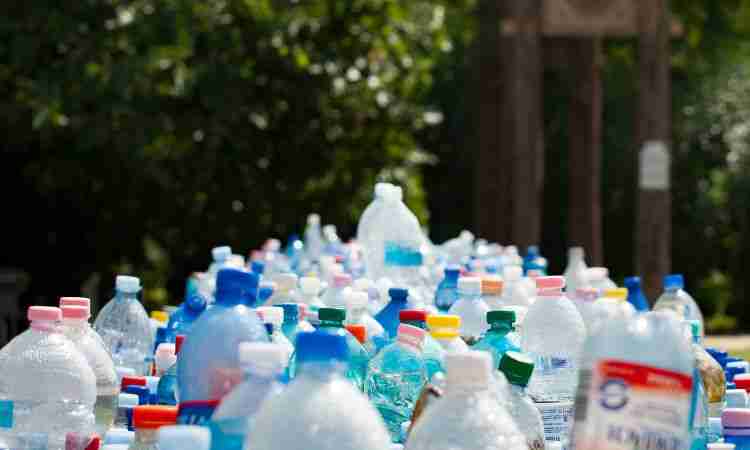
The global plastic market size attained a value of approximately USD 559.38 billion in 2023. The market is further expected to grow in the forecast period of 2024-2032 at a CAGR of 4.2%, reaching a value of around USD 811.85 billion by 2032 [1]. This ubiquitous material plays a vital role in countless industries, from packaging and healthcare to construction and automotive. However, the ever-increasing production and consumption of plastic have also led to significant environmental challenges.
A Brief Journey Through Plastic
The invention of Bakelite in 1907 marked the dawn of the plastic age. These versatile and affordable materials revolutionized various sectors. However, the mass production of plastics began in the mid-20th century, leading to a dramatic rise in their use and unfortunately, plastic waste.
Understanding Our Purpose
This blog post delves into the current state of the global plastic market. We’ll explore the trends shaping the industry, the challenges it faces, and most importantly, the innovative solutions paving the way for a more sustainable future.
Market Overview: A Sea of Plastic
The plastic market is a vast and complex ecosystem.
- Size and Growth: As mentioned earlier, the global plastic market is projected to witness significant growth in the coming years, driven by factors like rising urbanization, increasing disposable incomes, and expanding application areas.
- Key Players and Segments: Leading companies like BASF, Dow, ExxonMobil, and LyondellBasell dominate the landscape. The market can be segmented by plastic types (e.g., polyethylene, polypropylene, PVC) and applications (e.g., packaging, construction, consumer goods).
- Demand Drivers: The convenience, affordability, and durability of plastics fuel their global demand. Additionally, their lightweight nature and design flexibility make them ideal for various applications.
Trends Shaping the Plastic Market: A Shift Towards Sustainability
The narrative surrounding plastic is changing. Here are some key trends:
- Sustainable and Eco-friendly Plastics: Consumers are increasingly demanding eco-friendly alternatives. Biodegradable and compostable plastics made from renewable resources are gaining traction.
- Rise of Recycled Plastics: The circular economy concept is taking hold, with companies incorporating recycled plastic content into their products. This reduces reliance on virgin plastic and promotes waste reduction.
- Packaging Innovation: Packaging design is evolving to minimize material usage yet ensure product protection. Bio-based and recyclable materials are finding their place in the packaging arena.
Challenges: Navigating the Rough Waters
Despite its utility, plastic poses significant challenges:
- Environmental Concerns: Plastic pollution is a major issue impacting our oceans, wildlife, and ecosystems. Improper waste management leads to microplastics entering the food chain, posing a threat to human health.
- Public Perception: Consumers are becoming more aware of the environmental impact of single-use plastics, leading to a backlash against these products.
- Regulatory Pressures: Governments worldwide are enacting stricter regulations on plastic production, use, and disposal. Bans on specific plastic products like single-use bags are becoming commonplace.
- Supply Chain Disruptions: The recent global disruptions have highlighted the vulnerabilities of plastic supply chains. Shortages of raw materials can lead to price fluctuations and production challenges.
Sustainable Solutions: Charting a New Course
Innovation is paving the way for a more sustainable future for plastic:
- Recycling Advancements: Technological advancements are improving plastic recycling efficiency and infrastructure. This allows for the processing of a wider variety of plastic waste into usable materials.
- Alternative Materials: Research and development are focusing on bio-based and biodegradable alternatives to traditional plastics. These materials offer a more sustainable option with a lower environmental footprint.
- Extended Producer Responsibility (EPR): EPR programs place the responsibility for managing plastic waste post-consumer use on producers. This incentivizes them to design recyclable products and invest in waste management solutions.
- Industry Collaboration: Collaboration between plastic manufacturers, brands, retailers, and waste management companies is crucial. By working together, they can create a more efficient and sustainable plastic ecosystem.
The Circular Economy: Closing the Loop
Transitioning towards a circular plastic economy is essential. This model prioritizes waste reduction, reuse, and recycling. Here are some key aspects:
- Circular Economy Model: In a circular economy, plastic products are designed for disassembly and re-use. This minimizes waste generation and extends the lifespan of plastic materials.
- Waste Reduction and Reuse: Reducing plastic usage at the source and implementing effective product reuse strategies are crucial for minimizing waste generation.
- Success Stories: Initiatives like deposit return schemes for beverage bottles and innovative recycling programs demonstrate the potential of the circular economy model in the plastic industry.